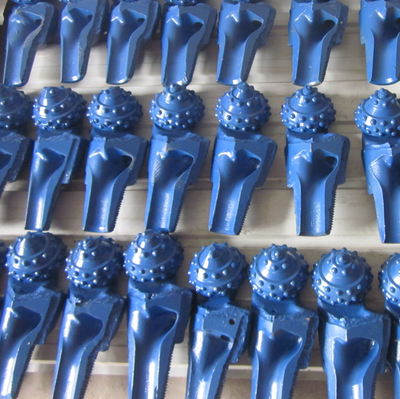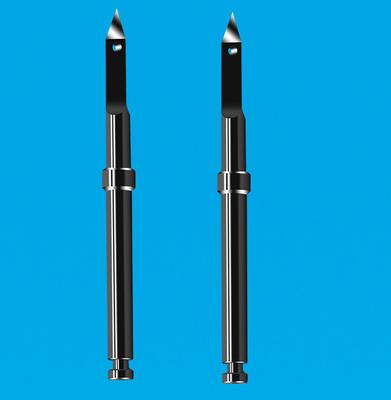Successful dental surgery relies upon the careful selection of surgical forceps. These versatile tools allow a dentist to precisely manipulate tissue during a number of different procedures. From grasping to pulling, each forceps has a designated purpose and can be readily identified by name. By familiarizing yourself with the various types of forceps and understanding their applications, you can skilfully equip your surgery for any situation. Ultimately, selecting the right forceps is an essential part of providing quality dental care.
During a dental surgery, tissue forceps are often employed to grip delicate objects or tissue such as sutures with precision. The two most popular models of this tool are the Adson and the Webster, each equipped with serrated tips for secure grasping. Different types of tissue forceps also exist to fulfill diverse applications, including the periosteal forceps directed towards implant extraction and the bone forceps meant to hold and manipulate bones during a procedure.
During dental surgery, a Crile-Wood or Mathieu forceps can be used to clamp blood vessels and provide much-needed control of any bleed. The Crile-Wood forceps feature a ratcheting mechanism for reliable clamping, whereas the Mathieu model has a curved tip that enables it to securely grasp tissue. Both are designed to help stop the flow of blood during procedures.
When it comes to grasping and holding items during a dental procedure, surgeons utilize 3 different forceps: the Mayo-Hegar, the Allis, and the Potts-Smith. The Mayo-Hegar forceps feature a curved tip that can be used to pick up larger items, while the Allis forceps utilize serrated tips for smaller items. Potts-Smith forceps are designed with a ratcheting mechanism to ensure that it can grip objects firmly.
Apt for tooth extractions, Cawood and Chandler are the two most typical styles of dental extraction forceps utilized throughout the dentistry field. These forceps are designed with curved ends and flat tips, respectively, to securely grab hold and remove necessary teeth without inflicting any additional damage to the surrounding tissue.
Grasping and manipulating braces and wires during a procedure calls for a dedicated tool, the orthodontic forceps. Used in dental surgery, these instruments are available in two varieties: Bonwill, with their curved tip to securely hold wires and brackets, and Schaeffer, their flat tip allowing for manipulation without risk of damaging the tissue. Both lend their particular efficiency during the dental surgery process.
When it comes to dental work, the right tool for the job is essential. Knowing the different types of forceps and how to use them correctly can make all the difference in reaching the desired outcome. Dental surgical forceps come in a variety of specialized designs, each meant to perform specific tasks and guarantee accurate results. The correct selection of appropriate forceps can ensure that every dental procedure is conducted with precision and care.
In the realm of oral surgery, dental surgical forceps are a requirement for secure grasping, manipulating, and stabilizing soft tissues. The designs, sizes, and types of forceps vary depending on their intended purpose. To ensure optimum safety and results, it is important to adequately choose and maintain these instruments.
For centuries, dental practitioners have been utilizing forceps in their craft – though the exact designs have shifted with time. In the earlier years these tools were largely constructed from iron, silver, or brass, yet contemporary forceps generally consist of stainless steel or titanium. Nevertheless, the central goal of the instrument remains unchanged: ensuring a strong and safe grasp on tissues or objects.
Common dental instruments used to manipulate small objects or tissue include the long and slender mosquito forceps, with its serrated tips for gripping securely. Additionally, hemostat forceps share a similar design to mosquitoes, but with a locking mechanism for more precise adjusting capabilities. Needle-gripping can specifically be achieved with needle holder forceps, which resemble mosquito forceps in size, shape, and control features such as its locking mechanism.
Oral surgeons have various specialized forceps available for executing dental procedures. Tissue forceps are used to handle soft tissues, root forceps are effective in extracting teeth, and bone forceps sort out bone manipulation. Additionally, periosteal forceps are employed to shift the periosteum, tissue expanders increase the surface area of soft tissue, and periodontal probe forceps gauge the depth of periodontal pockets.
When performing oral surgery procedures, it is critical to select forceps that are specifically designed for the task at hand; hemostat forceps are typically employed to work with tissue while needle holder forceps are ideal for grasping needles. Additionally, it is of paramount importance to select forceps that bring the perfect combination of size and shape to the table. For example, mosquito forceps may misrepresent an inadequate option when it comes to grasping and managing larger objects, just as hemostat forceps may fail to bring the finesse required when working with smaller components.
After each use, forceps should be carefully scrutinized for any signs of cracks, chips, or other damage and intently cleaned or sterilized following standard guidelines. If any faults are detected, use of the tool should be constrained until it’s returned to its original working condition. Doing so will support a secure and fruitful use.
Successful oral surgery necessitates appropriate forceps selection and upkeep. There are a variety of forceps based on the purpose of usage, thus it is vital to ascertain the correct one for the operation in question. After utilization, inspection for flaws, cleaning, and sterilization are necessary to ensure a dependable hold on items or fabrics. With exemplary picking and improvement, dental forceps can guarantee a safe and secure grip.
Related Product

Diamond Coating Round Diamond Cutters
Product Information Origin Tianjing, China Series U Series Brand MSK Cutting Edge Form Helical Structure Ball Diameter (Mm) 3 Material Carbide Minimum Cutting Diameter At Th […]

Dental CAD/CAM Milling Burs
Product Information Origin Tianjing, China Material Stainless Steel Brand MSK Applicable Machine Tools A Variety Of Options Custom Processing Yes Whether To Coat No Is It a […]

Diamond Bur Ball Round
Product Information Product Name Dental 4-Flute Ball End Mill Brand MSK Model D Number Of BladesZ X N L d 4BTD2060 2 4 6 6 50 3 4BTD2010 2 4 6 10 50 3 4BTD2016 2 4 6 […]

Carbide Roland CAD/CAM Burs
Product Information Origin Tianjing, China Brand MSK Number Of Blades 4 Product Name Dental Special 4-Blade End Mill Model D Number Of Blades Z X N L d 4TD2060HB 2 4 […]

Supply Roland DLC Zirconia Burs
Product Information Origin Tianjing, China Series Dental Bur Brand MSK Cutting Edge Form 2 Blade/3 Blade Ball Diameter (Mm) 0.6, 1, 2 Material Very Fine Grained Cemented Car […]

Step Bur Milling Bur Grinder for Glass Cerami
Product Information Origin Tianjing, China Shank Diameter 1.8 (mm) Brand MSK Scope Of Application CEREC3 Grinding Equipment Material Stainless Steel/Carbide Main Sales Areas […]

HP Deburring Carbide Burs
Product Information Brand MSK Material Tungsten Steel Model Grinding Head Custom Processing Yes Feature: The dental grinding head is made of tungsten steel with stabl […]
Post time: 2023-07-15
